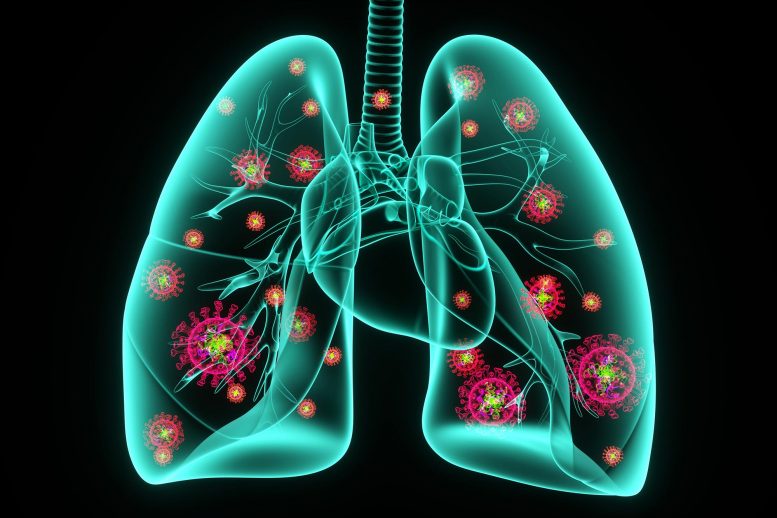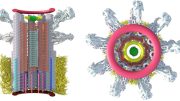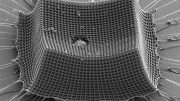
The immune system usually stays dormant in the lungs in times of health. Overactive immune system can cause issues like asthma and allergies, making it hard to breathe.
Long COVID-19 and other chronic respiratory conditions after viral infections may stem from an overactive immune response in the lungs.
Shortly after the beginning of the COVID-19 pandemic, anecdotal reports emerged of previously healthy individuals that were experiencing lingering symptoms and were not fully recovering from an infection with SARS-CoV-2. These patients started to refer to themselves as “Long Haulers,” and they coined the term “Long COVID.”
Viruses that cause respiratory diseases such as the flu and COVID-19 can lead to mild to severe symptoms within the first few weeks of infection. Usually, these symptoms resolve on their own within a few more weeks. Sometimes, if the infection is severe, treatments are needed to aid recovery. However, some people go on to experience persistent symptoms that last several months to years. It is still unclear why and how respiratory diseases can develop into chronic conditions like long COVID-19.
I am a doctoral student working in the Sun Lab at the University of Virginia. We study how the immune system sometimes goes awry after fighting off viral infections. We also develop ways to target the immune system to prevent further complications without weakening its ability to protect against future infections. Our recently published review of the research in this area found that it is becoming clearer that long COVID-19 and similar conditions might not be caused by an active viral infection. Instead, they are caused by an overactive immune system.
Long COVID-19 patients can experience persistent respiratory, cognitive, and neurological symptoms.
The lungs in health and disease
For your lungs to be able to function optimally, it is essential that your immune system remain dormant when there isn’t an active infection.
People call post-COVID conditions by many names, including: long COVID, chronic COVID, post-acute COVID-19, long-term effects of COVID, post-acute sequelae of SARS CoV-2 infection (PASC), and long-haul COVID.
Your respiratory tract is in constant contact with your external environment, sampling around 5 to 8 liters (1.3 to 2 gallons) of air – and the toxins and microorganisms in it – every minute. Despite continuous exposure to potential pathogens and harmful substances, your body has evolved to keep the immune system dormant in the lungs. In fact, allergies and conditions such as asthma are byproducts of an overactive immune system. These excessive immune responses can cause your airways to constrict and make it difficult to breathe. Some severe cases may require treatment to suppress the immune system.
During an active infection, however, the immune system is absolutely essential. When viruses infect your respiratory tract, immune cells are recruited to your lungs to fight off the infection. Although these cells are crucial to eliminating the virus from your body, their activity often results in collateral damage to your lung tissue. After the virus is removed, your body dampens your immune system to give your lungs a chance to recover.
An overactive immune system, as in the case of asthma, can damage the lungs.
Over the past decade, scientists have identified a variety of specialized stem cells in the lungs that can help regenerate damaged tissue. These stem cells can turn into almost all the different types of cells in the lungs depending on the signals they receive from their surrounding environment. Recent studies have highlighted the prominent role the immune system plays in providing signals that facilitate lung recovery. But these signals can produce more than one effect. They can not only activate stem cells, but also perpetuate damaging inflammatory processes in the lung. Therefore, your body tightly regulates when, where and how strongly these signals are made in order to prevent further damage.
While the reasons are still unclear, some people are unable to turn off their immune system after infection and continue to produce tissue-damaging molecules long after the virus has been flushed out. This not only further damages the lungs, but also interferes with regeneration via the lung’s resident stem cells. This phenomenon can result in chronic disease, as seen in several respiratory viral infections including COVID-19, Middle East Respiratory Syndrome (MERS), respiratory syncytial virus (RSV), and the common cold.
The immune system’s role in chronic disease
In our review, my colleagues and I found that many different types of immune cells are involved in the development of chronic disease after respiratory viral infections, including long COVID-19.
Researchers so far have identified one particular type of immune cell, killer T cells, as potential contributors to chronic disease. Also known as cytotoxic or CD8+ T cells, they specialize in killing infected cells either by interacting directly with them or by producing damaging molecules called cytokines.
Killer T cells are essential to curbing the virus from spreading in the body during an active infection. But their persistence in the lungs after the infection has resolved is linked to extended reduced respiratory function. Moreover, animal studies have shown that removing killer T cells from the lungs after infection may improve lung function and tissue repair.
A legion of immune cells work together to remove invading pathogens.
Another type of immune cell called monocytes are also involved in fighting respiratory infections, serving among the first responders by producing virus- and tissue-damaging cytokines. Research has found that these cells also continue to accumulate in the lungs of long COVID-19 patients and promote a pro-inflammatory environment that can cause further damage.
Understanding the immunological mechanisms underlying long COVID-19 is the first step to addressing a quickly worsening public health problem. Identifying the subtle differences in how the same immune cells that protect you during an active infection can later become harmful could lead to earlier diagnosis of long COVID-19. Moreover, based on our findings, my team and I believe treatments that target the immune system could be an effective approach to manage long COVID-19 symptoms. We believe that this strategy may turn out to be useful not only for COVID-19, but also for other respiratory viral infections that lead to chronic disease as well.
Written by Harish Narasimhan, PhD Candidate in Immunology, University of Virginia.
This article was first published in The Conversation.![]()









I’ve had lingering breathing problems since my 2 bout with Covid in June ‘22. My PCP & an ENT were no help. My Internist in 1/23 Rx’d Prednisone & Guaifenesin for my “overactive immune system!
It has helped a lot but now how do I treat seasonal allergies like pollen? Antihistamines seem to worsen symptoms.